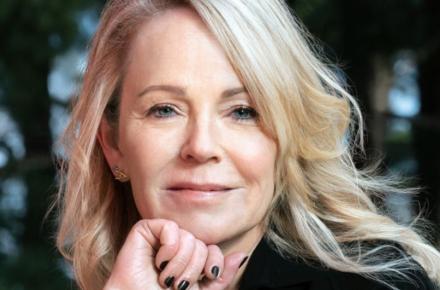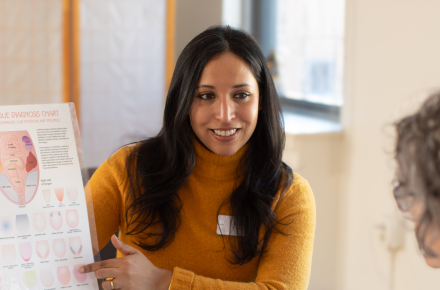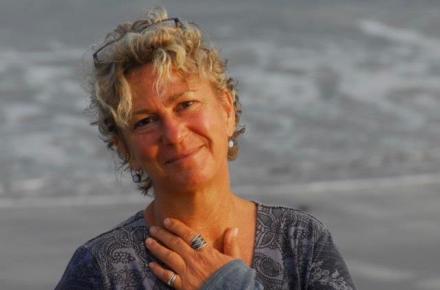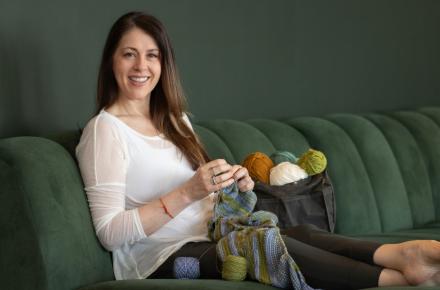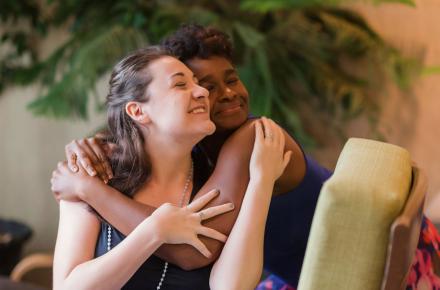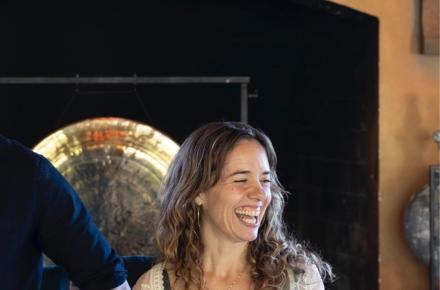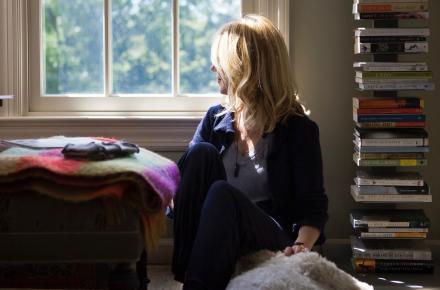The Intersection of Literature and Medicine, with Rita Charon

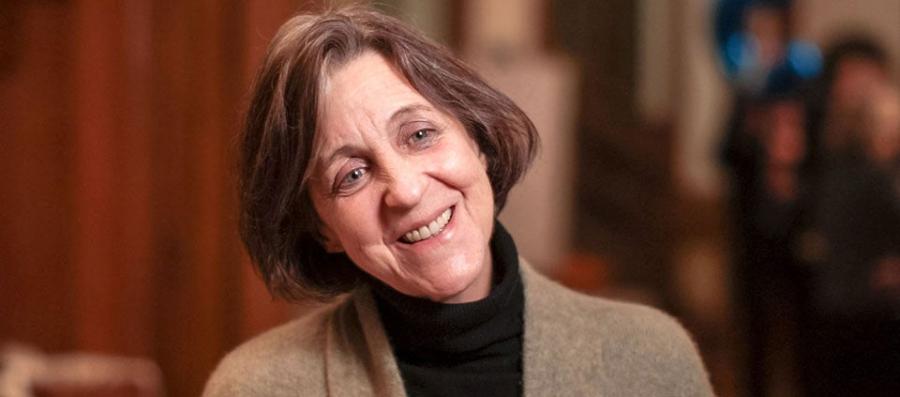
StoryFlow is a series featuring original conversations with Kripalu presenter Lisa Weinert and visionary doctors, writers, yogis, and spiritual leaders about the role of storytelling in their healing and caregiving processes.
Rita Charon is professor of clinical medicine and director of the Program in Narrative Medicine at the Columbia University College of Physicians and Surgeons. A general internist with a primary care practice, Rita pursued a PhD in English when she realized that telling and listening to stories are central to the work of doctors and patients. She directs the narrative medicine curriculum for Columbia's medical school and teaches literature, narrative ethics, and “life-telling,” in both the medical center and Columbia's Department of English.
Lisa How has storytelling acted as medicine in your own life?
Rita I have had deep relationships with my family and close friends that have always been the settings for those first, chaotic tellings of things that I don’t know until I tell them to my intimates. I have been in intensive psychotherapy over the years, demonstrating to me the absolute need for the fully committed, skilled, and “indifferent” listener as a witness to what one says when free to tell.
You speak about coming to medicine by way of reading. How did this happen? How did awakening your sense of story inform your medical teaching and practice?
I was always a reader. As a kid, I’d be up in the apple tree with my latest trove from the Mount Pleasant branch library in Providence, Rhode Island. I remember stumbling into a rehearsal of an on-the-road production of The Fantasticks when I was a sophomore in high school, and I just kept going back. Somehow, the stagehands let me into the cavernous theater downtown. I had no idea that all of that existed. I don’t know how many times, years later, I brought friends to see that play.
So I brought into medicine my desire to get lost in a story, and my conviction of how important a part of life reading is. By then, I had met and been taught by sociolinguist Elliot Mishler at Harvard Medical School, who conferred on me his commitment to understand the language of medicine and the disservice paid to patients by physicians’ control of the medical conversation and seeming disregard of what patients have to tell. I think that the combination of getting hooked on reading and theater as a kid and then finding a sanctionable reason from linguistics to bring this passion into medicine permitted me to make stories the center of my life as a doctor.
How does literature, literary theory, and creative writing practice help doctors and caregivers practice medicine?
It gives us the necessary conceptual frameworks for getting beyond a superficial, breezy nod to storytelling. Stories in medicine are not just for recreation. Without deep, rigorous, tested theoretical foundations from literary studies and aesthetic theory, we would not know why narratives matter in healthcare. When I started graduate school in the Department of English at Columbia, years after completing medical school and training, I found what I had been craving: a solid, complex, scholarly explanation for the phenomena that I had been living through as a physician—listening to fragmented, chaotic stories from relative strangers while having the duty to somehow understand their significance. How do I do that? What do I do with the paradoxes, the ambiguities, the contradictory stories from a family member, the gaps in memory, the fact that the stories changed from month to month? What do I do with my own doubt about the meaning of what I am hearing? Without what I learned as a literary scholar, I fear I would simply have learned to ignore accounts given by my patients as tangential to my work or, as the biostatistician would say, “noise.” It ain’t noise. It is the center of the event of healing.
How can writing help doctors build empathy? Are there techniques you recommend?
When doctors write, they too experience the discovery of learning what they know. It continues to astonish me that writing is an avenue to the “unthought known”—that is, the part of knowledge that sits under awareness. I think there are only two other ways to get there: dreaming and psychoanalysis. As I began to give medical students and colleagues permission to write about their practice, I saw that they, too, “caught” their own thoughts in ways they could not without the creative practice. You read aloud what you’ve written, even in a few minutes, and your readers or listeners are the ones who can tell you what you’ve written.
You first coined the term "narrative medicine" in 2001, and it has since become a buzzword in many circles and academic disciplines. What do you make of this widespread, encompassing movement? How is the narrative medicine program at Columbia different from literary programs in medical schools and other wellness programs that explore healing and storytelling, like the Narrative Medicine conference at Kripalu?
My partners and I are amazed at the range and spread of the term and some of the concepts behind it. We understand that not everyone includes everything that we signify with the term, but we are grateful and moved that the idea that paying very close attention to what our patients say to us and what we ourselves say or write to one another is necessary in healthcare. Our narrative medicine differs from some of the others in its being founded in philosophical and literary frameworks and concepts. Graduate students in our master’s program read Plato and Heidegger and Merleau-Ponty and Levinas. They study the literary and narrative theories that govern contemporary critical studies and narratology.
It is not the case everywhere that the name “narrative medicine” is used, and yet we all are in a sort of family of commitment and conviction that radical listening, the use of the imagination, and health and healthcare as creative acts all are necessary components of the care of the sick. When we published our book, The Principles and Practice of Narrative Medicine, it was in order to lay out what we consider to be the conceptual frameworks that led to the birth of narrative medicine. If others mean something slightly different than our principles, we do have the confidence that we are on a continuum of meaning and mission to center care on the lives of patients, and to not reduce their care to the technical procedures of caring just for their biological abnormalities.
What is the role of reading and writing in your life now? Are you reading anything new and exciting? Working on anything new?
I have a couple of groups at the hospital that I host—a literature seminar and a narrative medicine writing group—so I am always reading something new with colleagues and finding new works to teach. Right now, I’m reading John Banville’s Mrs. Osmond; Colson Whitehead’s Underground Railroad, which I’ll teach next term; and rereading Faulkner’s Absalom, Absalom! to teach alongside Whitehead. I am working on an essay, which might become a book proposal soon, on the synergy of creativity and doubt in the care of patients.
You are also passionate about the role of music in the healing process.
All I can say is that, when my two hands are able, very primitively, to play Bach’s Partita #4 and some parts of “The Well-Tempered Clavier,” I come into a kind of “knowing” like nothing else. It is a wordless knowing that somehow is necessary alongside the heightened attention that I always pay to words and what they do. The composer and the performer are able to convey some kind of signal or thought through music that cannot be spoken or intellectually thought. It is not just the emotional weight of the music, nor just the harmonies and disharmonies and tempos. It is a matter of being in another realm altogether—an embodied one, from the realm of words and thought, a realm with its own demand and complexity and reward and profound beauty.
Tell me about the idea of “radical listening” that you teach about. What is radical listening and how does it make a difference?
From the care of individual suffering families or couples to the anti-racism work in communities, I am committed to the ideal that people can listen to those who do not agree with them, who challenge their views, and yet who can give mutual respect across those chasms of opinion. These skills are essential for anyone in human services, as well as individuals within their own lives. You go to Thanksgiving dinner and talk with Uncle Bob, who votes against you, has different opinions about guns than yours, who comprehends the world in a way that’s outside your comprehension. Can you talk about anything other than the NFL? There is a way to bridge divides so that—slowly, perhaps—individuals can open themselves up—not to other beliefs (we are not aiming to convert people) but to develop some respect for the rights of others to hold opposing views. This might be the only way to avoid an out-and-out cleavage of the world into warring and annihilating camps. Radical listening is so necessary now, as many people feel stunned, stumped, betrayed, and powerless in the face of national and international situations. It makes a great difference in education, in healthcare, in community work when there is ground-floor respect for the ability of persons to disagree and to remain unmaligned.
Find out about upcoming programs with Rita Charon and Lisa Weinert at Kripalu.
© Kripalu Center for Yoga & Health. All rights reserved. To request permission to reprint, please e-mail editor@kripalu.org.









